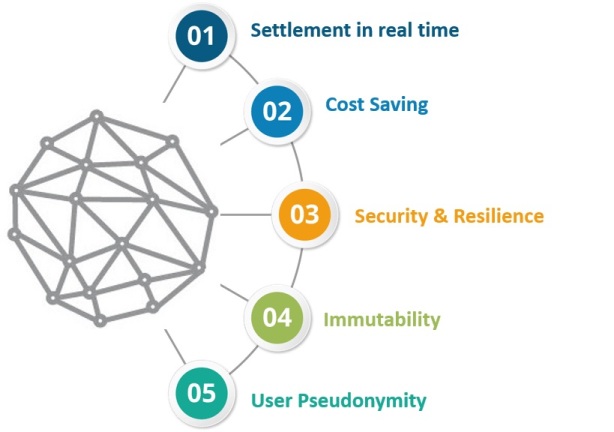
It is a cryptographically linked data blocks. Data blocks contains set of transactions which are in turn cryptographically linked. As data blocks are cryptographically linked data within blocks cannot be modified. Only Create, Read and Append operations are possible on blockchain.
A block is actually a file where data pertaining to blockchain network is permanently stored. A block records some or all the recent blockchain transaction details that have not yet entered any of the prior blocks. Thus, a block is like a page of a ledger or an account book. Each time a block is completed, it gives way to the other block. Data stored in blocks cannot be altered. A genesis block is the first block of a blockchain. Genesis block is almost hardcoded into the software of the applications that utilize its blockchain.
Distributed ledger technology (DLT) is a digital system for recording the transaction of Blocks in which the blocks are recorded in multiple places at the same time. The distributed ledger the data is replicated to multiple nodes and all nodes maintains the same data. Distributed Ledger Technology is an umbrella term used to describe technologies which store, distribute and facilitate the exchange of value between users, either privately or publicly. Blockchain is one type of DLT, others are Hashgraph, NANO etc.
Wherever, Trust, Provenance, traceability, transparency , and data needs to be shared among multiple parties then blockchain can be used. It will not replace the existing Relational, or No SQL databases used in existing application system.

In public blockchain, anyone can read and submit transaction, and take part in consensus process. Bitcoin and Ethereum are examples of public blockchain. Private blockchain is controlled by only a single body or an organization that controls who can read and submit transaction, and take part in consensus process. Consortium blockchain operations are controlled by a selected set of participating organisations. Public blockchain is called permission less blockchain. Private and consortium blockchain are called permissioned blockchain.
Blockchain is a distributed system of multiple working nodes(systems). All submitted transactions are committed or rejected uniformly across all nodes in the network. Consensus is a process to select a leader node, which decides whether the block of transactions is to be committed or rejected.
A piece of code used for storing transaction data in to blockchain after the consensus process. It can written in python, Golang, Javascript, Java, C++ etc. Apart from writing transactions, other business rules can be included within the code.
Hyperledger is an open source collaborative effort created to advance cross-industry blockchain technologies. It is a global collaboration, hosted by The Linux Foundation, including leaders in finance, banking, Internet of Things, supply chains, manufacturing, and Technology.
| Properties | BlockChain | Traditional Database |
|---|---|---|
| Operations | Only Create, Read, Update operations | Create, Read, Update, Delete operations |
| Replication | Full replication on block to on every peer | Master Slave or Multi Master |
| Consensus | Majority of peers agree on the outcome of transactions | Distributed Transactions ( 2 phase commit ) |
| Invariants | Anybody can validate transactions across the network | Integrity Constraints |